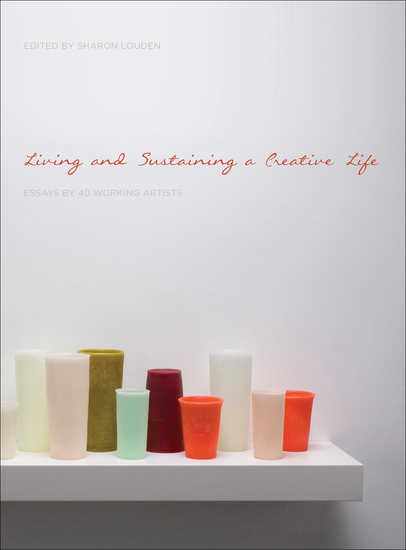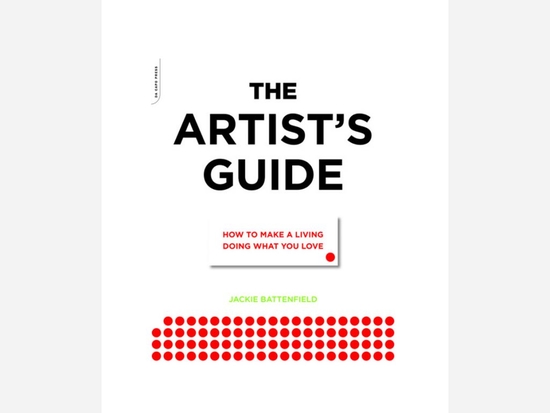[In this and a following post, Andrea shares her top picks for books aimed at artists. From running a studio and budgeting for supplies to negotiating with gallery owners and creating professional relationships, these books can be invaluable resources for those involved in the art world. — the Artblog editors]
For artists starting out

Twenty-one years ago, with a new MFA from Yale, Sharon Loudon moved to Brooklyn and soon faced the crucial question not raised in graduate school: How was she going to sustain a creative practice while trying to survive? She asked the same question of 40 artists she knows and respects. “I’ve had to find my own path,” says Loudon in the text, “and I only wish that I had artists to lean on and consult such as the contributors to this book.”
Living and Sustaining a Creative Life should be handed out with every fine arts degree, and perhaps that’s happening, since the book is in its third printing within five months. It doesn’t cover all the business practicalities that might be addressed in a professional practices course, although many of the essays include discussion of studio arrangements, working with assistants, and forming relationships with dealers, collectors, curators, and critics. The essays focus instead on how each artist has found a way to continue making art. They all had to set priorities, manage their time, maintain personal and professional relationships, and remain flexible enough to deal with changing circumstances.
Obviously, each artist had to produce enough money to survive, which often led them to work outside of selling artwork or teaching full-time. Some avoided commercial galleries out of a belief that market capitalism didn’t suit their art or politics. Even artists who sold pieces regularly knew that sales aren’t a predictable source of funds. One had quit his day job when sales produced sufficient income, but returned to full-time work to create freedom to experiment in his practice without considering marketability.
The essays cover the equally important questions of accommodating the needs of family, social life, connections with other artists, means of intellectual stimulation, and sources of critical feedback. The solutions are as individual as the artists, and should make it clear that Loudon’s question doesn’t have one right answer. Young artists will inevitably have to provide their own. This volume suggests many options, and may leave those looking for advice feeling less alone.
The book’s design is restrained and particularly attractive, with a colored illustration of each artist’s work.
For a book that is less narrative, but primarily a how-to–a What Color is Your Parachute? written for visual artists, but equally suitable for writers, musicians, and others in the performing arts–I highly recommend the following guide.
A practical guide for young and not-so-young artists

The Artist’s Guide contains a wealth of practical information, presented in an engaging manner, that has made it useful for many established artists, as well as for those starting out. Battenfield begins by saying that the reader must articulate her or his own vision of a successful career, since you can’t be successful without clear goals. Success for one artist may be defined as selling enough work for sales to be his sole source of support; for another, it means representation by a New York City gallery; and a third artist may define success as simply creating a life that supports ongoing art-making.
Battenfield has managed to support herself through sales for more than 20 years, and gives concrete information about how to achieve your goals step by step. She lets you know that she’s had to figure out each of these skills at every step of her own career, and has written the book to make it easier for everyone else. She teaches a course in professional practices at Columbia University, for Creative Capital Foundation, and at meetings and art schools across the country.
Among the topics Battenfield addresses are: writing an artist’s statement, photographing artwork, networking, creating opportunities, money management, how to research and write grants for support and residencies, contracts and negotiation, and how to organize a studio’s daily operations. In fact, Battenfield’s book would be an ideal follow-up to Loudon’s.






